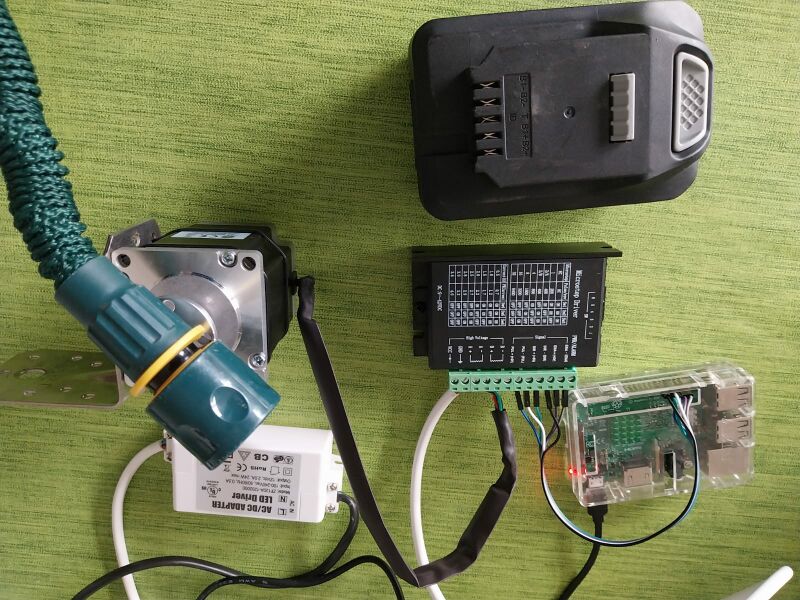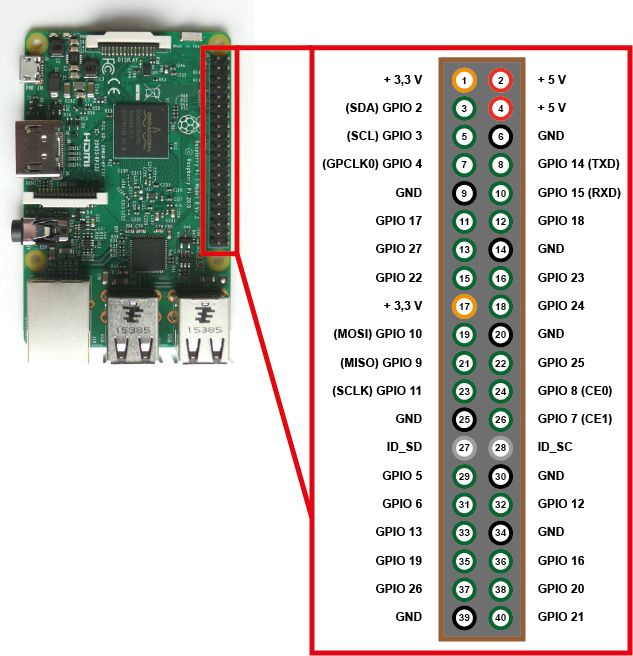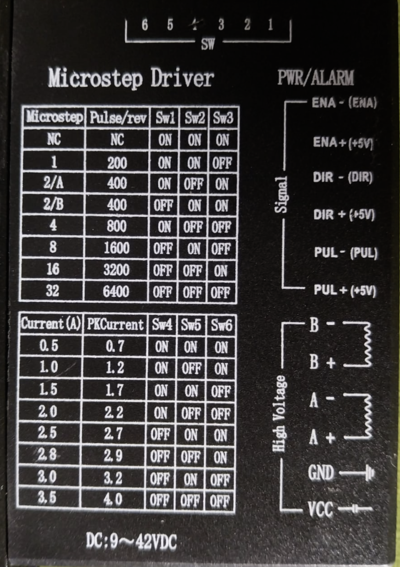"""
stepper.py
Control two stepper motors connected to a Raspberry Pi through a TB6600 driver to sprinkle a lawn.
Author: Wolfgang, ChatGPT, Claude AI
Date: 2024-07 to 2024-08
"""
import RPi.GPIO as GPIO
import time
import argparse
from typing import Dict
class StepperMotor:
def __init__(self, name: str, ena_pin: int, dir_pin: int, pul_pin: int, steps_per_revolution: int = 200):
self.name = name
self.ena_pin = ena_pin
self.dir_pin = dir_pin
self.pul_pin = pul_pin
self.steps_per_revolution = steps_per_revolution
self.setup_gpio()
def setup_gpio(self):
GPIO.setup(self.ena_pin, GPIO.OUT)
GPIO.setup(self.dir_pin, GPIO.OUT)
GPIO.setup(self.pul_pin, GPIO.OUT)
GPIO.output(self.ena_pin, GPIO.HIGH) # Start with motor disabled
def enable(self):
GPIO.output(self.ena_pin, GPIO.LOW)
def disable(self):
GPIO.output(self.ena_pin, GPIO.HIGH)
def set_direction(self, clockwise: bool):
GPIO.output(self.dir_pin, GPIO.HIGH if clockwise else GPIO.LOW)
def step(self, steps: int, delay: float):
for _ in range(abs(steps)):
GPIO.output(self.pul_pin, GPIO.HIGH)
time.sleep(delay)
GPIO.output(self.pul_pin, GPIO.LOW)
time.sleep(delay)
class Move:
def __init__(self):
GPIO.setmode(GPIO.BOARD)
self.motors: Dict[int, StepperMotor] = {
1: StepperMotor("Motor1", 37, 35, 33),
2: StepperMotor("Motor2", 31, 29, 23)
}
def enable_motor(self, motor_id: int):
motor = self.motors.get(motor_id)
if motor:
motor.enable()
else:
print(f"Motor {motor_id} not found")
def disable_motor(self, motor_id: int):
motor = self.motors.get(motor_id)
if motor:
motor.disable()
else:
print(f"Motor {motor_id} not found")
def move_motor(self, motor_id: int, angle: float, speed_rpm: float, keep_enabled: bool = False):
motor = self.motors.get(motor_id)
if not motor:
print(f"Motor {motor_id} not found")
return
steps = int(abs(angle) / 360 * motor.steps_per_revolution)
delay = 30 / (speed_rpm * motor.steps_per_revolution)
motor.enable()
motor.set_direction(angle >= 0)
motor.step(steps, delay)
if not keep_enabled:
motor.disable()
def perform_pattern(self,
horizontal_angle: float,
horizontal_steps: int,
vertical_angle: float,
rpm: float):
# Enable both motors before starting the pattern
self.enable_motor(1)
self.enable_motor(2)
for _ in range(horizontal_steps):
self.move_motor(1, horizontal_angle, rpm, keep_enabled=True)
self.move_motor(2, vertical_angle, rpm, keep_enabled=True)
self.move_motor(2, -vertical_angle, rpm, keep_enabled=True)
# Reset horizontal position
self.move_motor(1, -horizontal_angle * horizontal_steps, rpm, keep_enabled=True)
# Disable both motors after completing the pattern
self.disable_motor(1)
self.disable_motor(2)
def perform_pattern_by_args(self, pattern_args):
# Default values
params = {
'steps': 80,
'hangle': 160,
'vangle': 120,
'rpm': 10
}
# Parse provided arguments
for arg in pattern_args:
key, value = arg.split('=')
if key in params:
params[key] = float(value)
# Execute the pattern
self.perform_pattern(
horizontal_angle=params['hangle'] / params['steps'],
horizontal_steps=int(params['steps']),
vertical_angle=params['vangle'],
rpm=params['rpm']
)
def cleanup(self):
for motor in self.motors.values():
motor.disable()
GPIO.cleanup()
time.sleep(0.1)
# Modify main function to use the new approach
def main():
parser = argparse.ArgumentParser(description="Control stepper motors")
parser.add_argument("-m", "--motor", type=int, default=1, help="Motor ID (default: 1)")
parser.add_argument("-a", "--angle", type=float, default=15, help="Angle to rotate (default: 15, positive for CW, negative for CCW)")
parser.add_argument("-r", "--rpm", type=float, default=20, help="Speed in RPM (default: 20)")
parser.add_argument("-k", "--keep-enabled", action="store_true", help="Keep motor enabled after movement")
parser.add_argument("-p", "--pattern", nargs='*', metavar="KEY=VALUE",
help="Perform pattern: [steps=N] [hangle=DEG] [vangle=DEG] [rpm=RPM] default: steps=20,hangle=160,vangle=90,rpm=10")
args = parser.parse_args()
move_controller = Move()
if args.pattern is not None:
# For pattern, we'll handle enabling/disabling within the perform_pattern method
move_controller.perform_pattern_by_args(args.pattern)
else:
# For single motor movement
move_controller.move_motor(args.motor, args.angle, args.rpm, args.keep_enabled)
move_controller.cleanup()
if __name__ == "__main__":
main()
#!/bin/bash
# Bash script to control a two-motor garden hose system for watering a lawn
# Utilizes the updated stepper.py to turn two motors
# Define the path to your stepper.py script
STEPPER_SCRIPT_PATH="./stepper.py"
python3 $STEPPER_SCRIPT_PATH -p
To control the stepper motor directly:
sudo python3 stepper.py --angle 90 --direction left --frequency-hz 500 --rpm 30
sudo is necessary for accessing the kernel memory directly.
This will run 10 cycles of watering. Adjust the number as needed.










